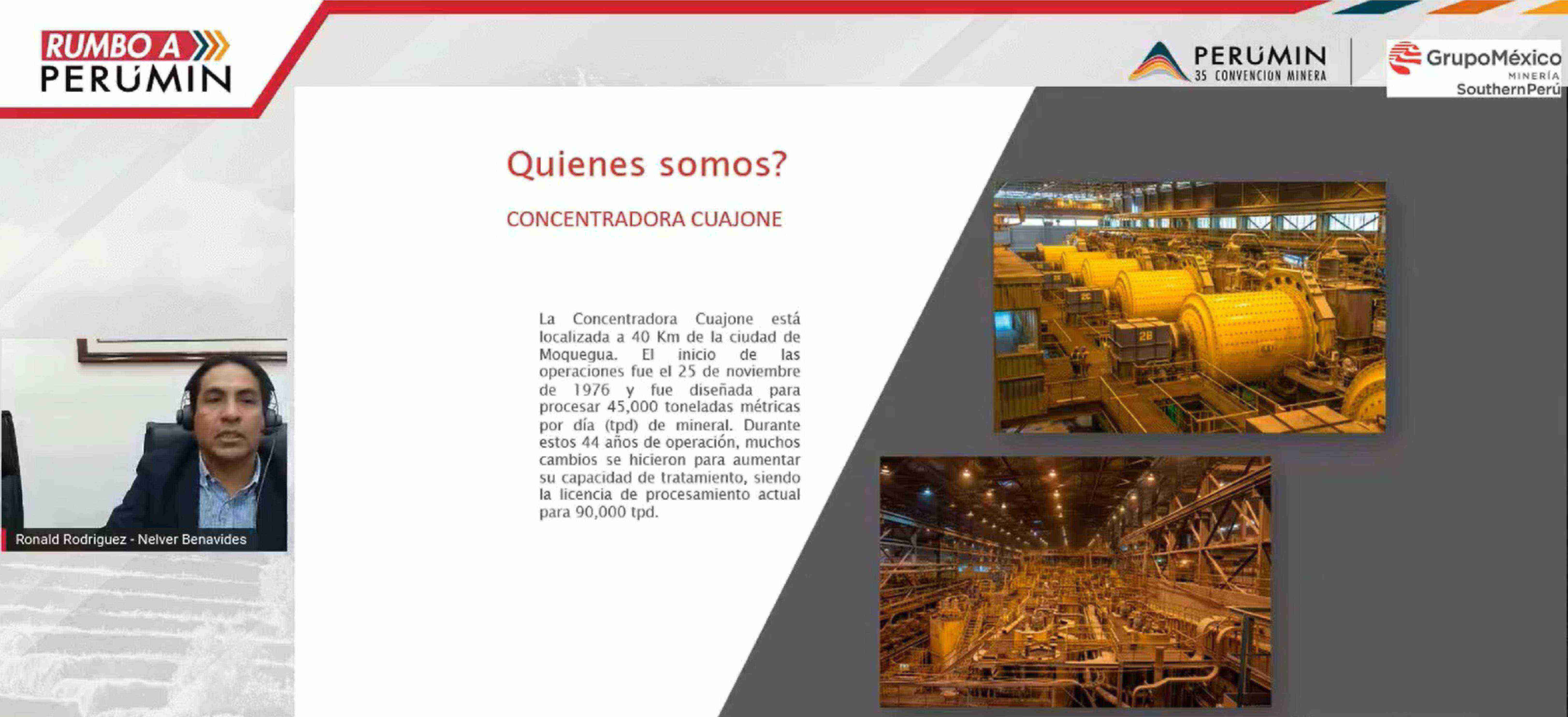LIMA, SEPTEMBER 21 2021 Southern Peru: Digital transformation is increasingly urgent in mining

"Artificial intelligence (AI) is the fastest moving technology in terms of impact that we have tracked and that is why we have begun to implement it in the operations of the Cuajone concentrator plant", said Ronald Rodríguez, Process Control engineer from Southern Peru, during the presentation "Mining 4.0. Application of Artificial Intelligence in the Cuajone Concentrator", presented at Heading to PERUMIN, the prelude event to the most important academic-commercial mining convention in the country.
Located 40 kilometers from the city of Moquegua, the Cuajone concentrator began operations in 1976 with a processing level of 45,000 metric tons of ore per day. Over 44 years of operation, the plant underwent several changes that contributed to doubling its treatment capacity to 90,000 tons per day.
But the changes became even more specialized thanks to the arrival of the fourth industrial revolution, a new paradigm that broke schemes in the mining sector to strengthen its procedures with the help of robotic engineering, the internet of things and interconnectivity with the cloud and the analytics of large volumes of information.
"Today we are talking about mining 4.0, in which we seek the union of the virtual and real process, that is, a virtual model that is developed in parallel to what is physically happening in the field, with the purpose of maximizing production and increasing our environmental protection standards, under the principles of self-management, autonomy and sustainability. We call all this digital transformation and it is increasingly urgent for the efficient control of complex mining and metallurgy processes", he explained.
The digital transformation undertaken bySouthern Peru in Cuajone aims to cover the entire integral process of the operation, from the mine, through the concentrator and the smelter to the shipping port. Digitization is in its first stage and has already covered all functions of the concentrator and some of the mine area.
"In this first stage, we are pursuing the digital transformation of the milling, flotation, thickening and water recovery processes. The objective is to increase copper production from 1% to 2%, primarily", he said.
Virtual modeling of the concentrator
With artificial intelligence and its technological tools, it has been possible to perform virtual modeling of the type of mineral discharged in the primary crusher to identify variations, generate better treatment of the mineral and thus obtain higher recoveries.
"The digital transformation starts from the collection of the data provided by the sensors and then moves on to a virtual modeling of the different sub-processes of the concentrator plant, including crushing, grinding, flotation, thickening and tailings, with the aim of predicting the mineral sent by mine, generating an NMP (Net Metal Production) model for maximizing copper production and finally determining the losses or profits that we may have through the digital models generated", explained Ronald Rodríguez.
Finally, he revealed that Southern Peru is applying artificial intelligence to develop new research in more precise analysis of ore grades, as well as to determine optimal and non-optimal zones through real-time operating points.







